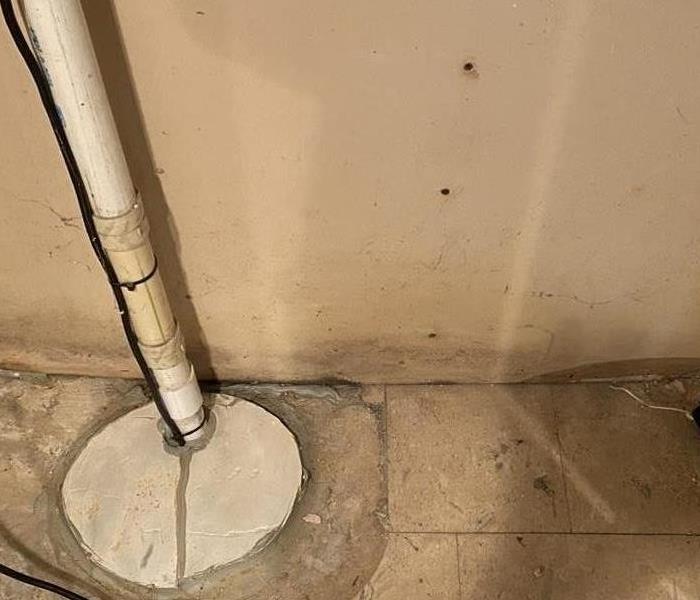What to Do When Your Sump Pump Fails: A Guide to Managing Water Damage
6/24/2024 (Permalink)
 It’s essential to contact water damage restoration professionals like SERVPRO for a thorough assessment and repairs.
It’s essential to contact water damage restoration professionals like SERVPRO for a thorough assessment and repairs.
A sump pump failure can quickly turn into a homeowner’s nightmare, especially during heavy rains or melting snow. When your sump pump stops working, it’s crucial to act swiftly to minimize water damage and restore a dry, safe environment in your home. Here’s a comprehensive guide on what to do when faced with a sump pump failure:
1. Assess the Situation: Upon discovering that your sump pump has failed, assess the extent of the water damage. Determine how much water has accumulated in the affected area and whether it is spreading to other parts of your home.
2. Safety First: Before taking any action, prioritize safety. Ensure that electricity to the affected area is turned off to avoid electrical hazards. If water levels are high or if the situation seems unsafe, consider evacuating the area until professional help arrives.
3. Check for Power Issues: Verify whether the sump pump failure is due to a power outage or a tripped breaker. If power is the issue, safely restore power to the sump pump and observe if it resumes operation. However, if the pump remains non-functional, proceed with other steps.
4. Remove Water: Use a wet/dry vacuum, submersible pump, or buckets to begin removing water from the affected area. Start with the highest concentration of water and work towards the sump pit or a floor drain to facilitate drainage.
5. Address Damp or Wet Materials: Remove any damp or wet items from the affected area to prevent further water damage and mold growth. This includes furniture, carpets, and other belongings that may have been exposed to water.
6. Dry Out the Area: Promote drying by using fans and dehumidifiers to reduce moisture levels in the air and on surfaces. Open windows and doors if weather permits to facilitate airflow and aid in the drying process.
7. Clean and Disinfect: After water removal, thoroughly clean and disinfect the affected area to prevent mold growth and bacterial contamination. Use a solution of water and mild detergent, followed by a disinfectant approved for use on water-damaged surfaces.
8. Contact Professionals for Assessment and Repairs: Even if you’ve managed to mitigate initial damage, it’s essential to contact water damage restoration professionals like SERVPRO® for a thorough assessment and repairs. They can inspect for hidden moisture, assess structural damage, and ensure proper restoration to prevent long-term issues like mold growth.
Preventing Future Sump Pump Failures:
- Schedule regular maintenance for your sump pump, including cleaning and testing.
- Consider installing a battery backup or water-powered backup sump pump to ensure operation during power outages.
- Inspect and maintain the discharge pipe to ensure proper drainage away from your home’s foundation.
Conclusion:
Experiencing a sump pump failure can be stressful, but knowing how to respond promptly can significantly minimize damage to your home and belongings. By following these steps and seeking professional assistance when needed, you can effectively manage water damage and restore your home to its preloss condition. At SERVPRO, we’re here to help with comprehensive water damage restoration services. Contact us today for expert assistance and peace of mind.
Trust SERVPRO for prompt and reliable water damage restoration services. Contact us immediately if you’ve experienced a sump pump failure—we’re here to help restore your home.






 24/7 Emergency Service
24/7 Emergency Service